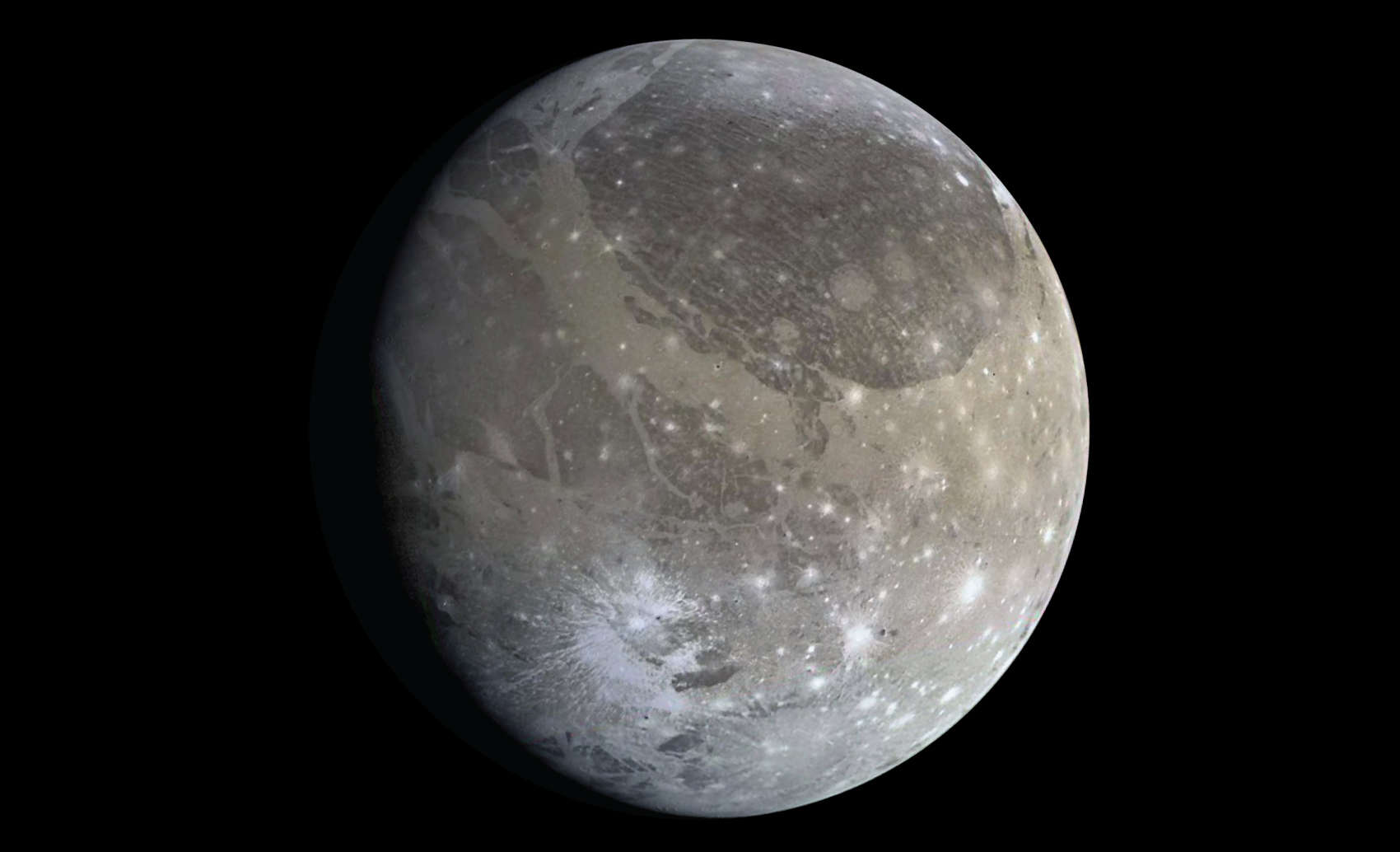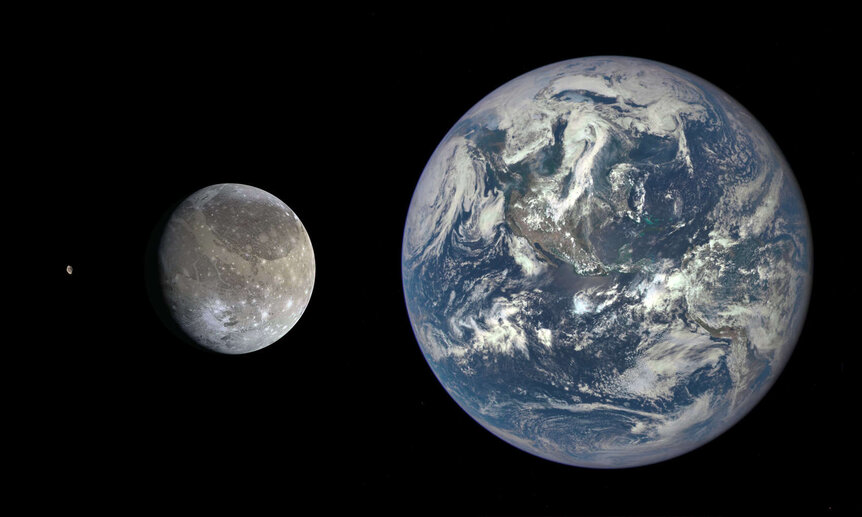Create a free profile to get unlimited access to exclusive videos, sweepstakes, and more!
The biggest crater known was from an asteroid that made the dinosaur killer look like a pebble

Billions of years ago, Jupiter's planet-sized moon Ganymede got a helluva whack: Looking over data from probes that have visited the moon, scientists estimate it got hit by an object a staggering 300 kilometers wide.
That's…well I was going to say "cataclysmic" but even that underplays the nightmarish over-the-top violence of this event. Everything within a thousand kilometers of the impact point would've been melted, and the entire surface of the moon would've been severely affected. Even the interior suffered huge changes from this. An impact like this today on Earth would scour our planet clean of life. On a moon it must have been apocalyptic.
Ganymede is one of the four big moons of Jupiter, and is in fact the biggest moon in the solar system — bigger than Mercury. At 5,260 kilometers in diameter it's the ninth largest object we know of in the solar system.
It was discovered by Galileo in 1610, and first visited by spacecraft in the early 1970s, but it was the visits by Voyager 1 and 2 in 1979 that showed us the moon up close. It has two main kinds of surface features; what are called dark and light terrains. The dark terrains are older (as determined by crater counts; older surface features have more craters on them), with the light terrain forming later. About 1/3rd of Ganymede is covered in dark terrain.
Inside those dark regions are furrows, long troughs that at first look like they form in a series of parallel lines. But if you take a step back you can see they're laid out in concentric circles covering much of the moon. At first it was thought they covered one hemisphere of Ganymede, but in the new work the scientists show they cover essentially the whole moon, forming a gigantic series of concentric features.
The center of these collected furrows is located at about 20° south of Ganymede's equator, smack dab in the center (180° west) of the side of Ganymede that always faces away from Jupiter (the anti-Jupiter side, as it's called; the moon rotates with the same period it revolves around Jupiter, so it keeps the same face toward the planet, just like the Moon does with Earth).
This strongly implies a common origin for all of them, and that just screams impact. It's hard to say how big the crater was after the impact, since there's no rim or identifiable crater to see; the impact was just too big. That makes the size of the impactor hard to determine, but using some basic assumptions the scientists estimate the impactor must have been about 300 kilometers across, and hit at about 20 kilometers per second.
The energy of that impact is setting my brain on fire. It's the equivalent of a trillion one-megaton bombs. That's tens if not hundreds of millions of times the total yield of all the nuclear weapons on Earth. So, yeah.
By the way, the asteroid that slammed into the Gulf of Mexico and killed the (non-avian and marine) dinosaurs was probably about 10 kilometers wide. That means the Ganymede impactor was 30 times wider and 27,000 times the volume. Holy moley.
The impact effects were so big that the scientists can't say for sure if it hit at 20° S 180°W or on the opposite side of the moon (20° N 0° E). Both points fit the direction of the furrows, though the former is a better fit since the furrows on that side of Ganymede are more obvious.
This impact would've dumped a vast amount of heat into Ganymede. Interestingly, the moon has been found to possibly have an ocean of liquid water deep under its surface; I have to wonder if this impact had anything to do with that. Radioactives in the core and tidal heating from Jupiter likely contribute to keeping it warm deep down inside Ganymede, but an impact of this size would have repercussions throughout the moon as well.
The scientists note that an impact this size would leave a lump of material under the impact site. This would increase Ganymede's gravity locally over that spot. That's testable! Future spacecraft like JUICE or the Europa Clipper may pass over Ganymede many times, and that allows scientists to map its gravitational field. If they find a massive lump under that spot, then there you go.
It's funny to think the biggest impact known in the solar system wasn't found until now, but in fact it makes sense. The impact was so overwhelmingly huge it's hard to see, like how the Earth is a sphere so big that standing on its surface you can't tell. It's only when global maps of Ganymede were made that the impact evidence could be found at all.
When the solar system was young, impacts this size were, well if not common then at least not unheard of. Happily, they're extraordinarily unlikely today. But they did shape the worlds we see today, so I'm glad we're trying to understand them.
[Postscript: Just after I posted this, I realized my headline was wrong; as I point out in the article there is no crater, the impact was so huge the entire surface of the moon was affected. I should've said "The biggest extant impact feature in the solar system..." You could get nitpicky and say that Earth was likley hit by a Mars-sized object which is how the Moon formed, but there isn't any impact scar left from that; the Earth's surface reformed after it. It pays to be careful here!]




























